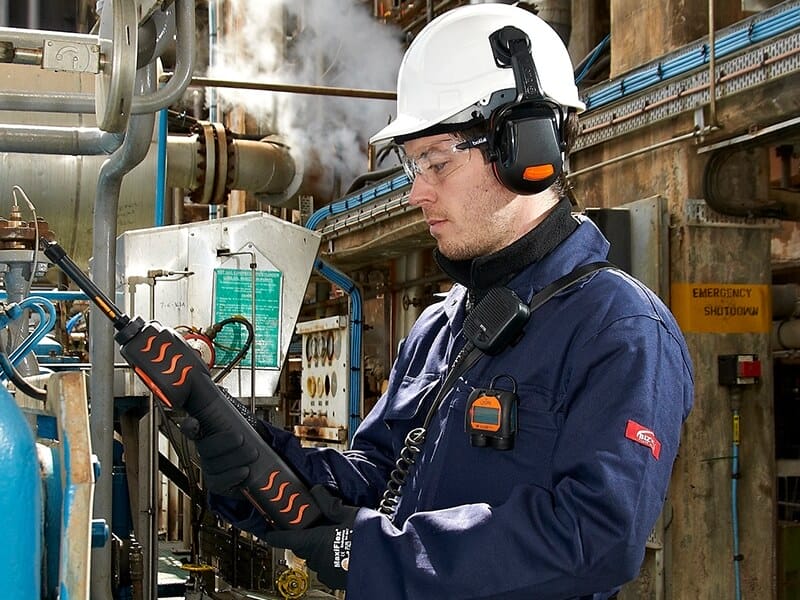
The photoionisation detector (PID) has proven to be an ideal solution to monitor benzene within the environment. But there are several considerations that must be borne in mind when choosing an instrument.
PID theory of operation
Figure 1 is a schematic of a typical PID sensor system. A UV lamp generates high- energy photons, which pass through the lamp window and a mesh electrode into the sensor chamber. Sample gas is pumped over the sensor and about 1% of it passes through a porous membrane into the other side of the sensor chamber. The inset on the ‘lower right’ of figure 1 shows what happens on a molecular level. When a photon with enough energy strikes a molecule M, an electron (e-) is ejected. M+ ion travels to the cathode and the electron travels to the anode, resulting in a current proportional to the gas concentration. The electrical current is amplified and displayed as a ppm (or part per billion (ppb)) concentration. Not all molecules can be ionized, thus, the major components of clean air, i.e., nitrogen, oxygen, carbon dioxide, argon, etc., do not cause a response, but most VOCs do give a response.
Which lamp do I need?
Typically, three lamps are available with maximum photon energies, measured in electron- volts (eV), of 10.0 eV, 10.6 eV, and 11.7 eV. Figure 2 illustrates that a lamp can only detect those compounds with ionization energies (IE) equal to or below that of the lamp. Thus, a 10.6 eV lamp can measure Methyl Bromide with an IE of 10.5 eV and all compounds with a lower IE, but cannot detect methanol or compounds with a higher IE.
The choice of lamp therefore depends on the application. When only one compound is present, one can use any lamp with enough energy, often the standard 10.6 eV lamp which has a lower cost point and has a long working life of up to a few years. Conversely the 11.7 eV lamp has a short life of only a few months.

Benzene has a low IE value as shown in Figure 2 and it is often present in a ‘cocktail’ of other chemicals including aromatics and aliphatic. Using a proprietary 10.0 eV lamp means that only the aromatics are detected (amongst other gasses that may be present) and should the total aromatic compounds (TACs) be above the regulatory limit, a benzene pre- filter tube can be used to provide a more accurate reading to monitor benzene.
Download our Guide: Benzene Monitoring









 United Kingdom
United Kingdom






